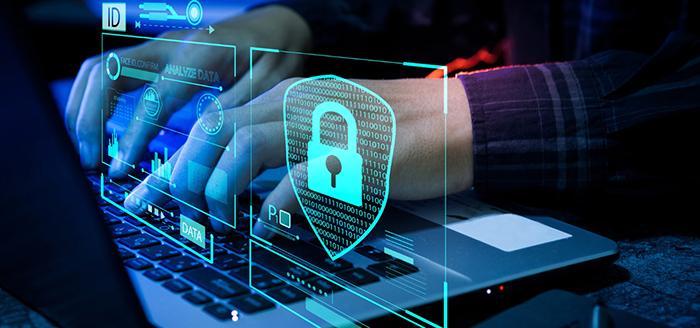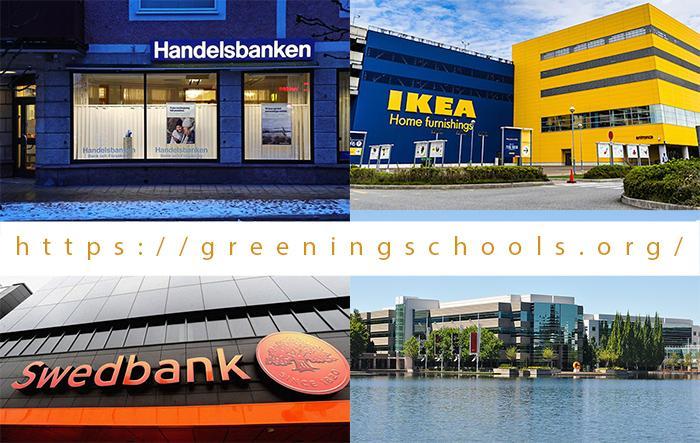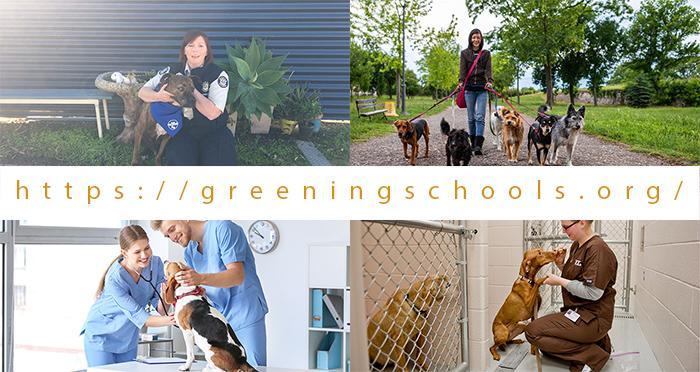Overview
More and more companies are looking to implement smart technology as it grows in popularity. People who are interested in taking advantage of this demand may want to enroll in a program that focuses on internet-connected devices. Find out what you can do with this degree so you can make an informed decision about your future. This article lists seven career paths that are possible with an IOT degree and describes the main responsibilities associated with each.

What can you do with an iot degree 7 best iot jobs
Computer programmer
A computer programmer writes the instructions for computer programs. They work closely with software developers to turn designs into executable code. Programmers can create new programs, improve existing ones, and check their work for bugs. These professionals typically have a deep understanding of a wide range of programming languages, making them valuable to a wide range of companies. To save time, they could use pre-existing code libraries. By paying meticulous attention to detail and employing their analytical skills, computer programmers can ensure the proper operation of programs with thousands of lines of code.
Product manager

A product manager is someone who organizes the production of novel goods, typically technological devices. They often take charge during brainstorming sessions and even come up with the initial concepts. After aiding the team in developing the new product’s concept, the product manager formulates a manufacturing strategy. They buy materials, decide which production methods to use, and oversee the design staff. Product managers coordinate promotional efforts in addition to overseeing quality assurance. A demonstrated capacity for leadership, strategic thinking, and sound fiscal management is essential in this field. These experts know how to keep costs in check and never go over the company’s allotted spending limit.
Data scientist
A data scientist’s job is to analyze large amounts of data and then summarize the findings in concise reports. The goal of this field is to evaluate software performance and improve processes by bringing together business logistics, programming, and statistics. Data scientists are increasingly used by businesses to improve app quality and user satisfaction. The best solutions are developed through the combined efforts of these specialists, who devote a great deal of time to study and modeling. Additional responsibilities may include analyzing user feedback, communicating findings to stakeholders, and creating methods to predict application performance.
Software architect
Software architects are in charge of managing software projects, supervising teams of developers and deciding which tools and methods to use. When making executive decisions, they investigate relevant technical standards and consider the customer’s wants and needs. The task of reducing the software project’s scope into manageable chunks is also crucial. Projects are managed by software architects, who also delegate tasks to developers according to their expertise. While administration is a major part of this job, you may also be asked to get your hands dirty with things like coding or quality assurance.
Cybersecurity analyst

A cybersecurity analyst is responsible for guarding a company’s data from harm. These experts are frequently sought out by smart device manufacturers and retailers so that companies can protect their customers’ private information. They also evaluate the security of a network on a regular basis by looking at its architecture and tracking the traffic. Cybersecurity analysts can identify potential flaws and work with staff to create and implement fixes. Analysts in this field may also be a part of groups tasked with responding to intrusion attempts. Their job is to secure the system, figure out what caused the breach, and set up safeguards to stop it from happening again.
Front-end developer
A website’s or app’s visual elements are developed by a front-end developer using various programming languages. Fonts, colors, and layouts are all decided upon in conjunction with front-end designers. A front-end developer will take into account both the aesthetic and practical needs of the client when designing a website. This work entails reducing page load times and making content responsive to different screen sizes. It’s not uncommon for front-end developers to also be in charge of routine website maintenance and performance testing. In most cases, you’ll need strong coding skills and an understanding of SEO best practices to pursue this line of work.
Cloud engineer
A cloud engineer is a type of systems administrator who works to consolidate and control a company’s data in the cloud. Companies frequently employ such experts to move their existing data to the cloud, where it can be better protected and shared. Engineers in the cloud can take care of a company’s cloud infrastructure by offering customized web services like file sharing and automation. In the event of technical difficulties with a cloud-based procedure, these experts investigate the cause and propose fixes. As cloud computing is still in its infancy, engineers in the field work hard to keep up with the latest developments in the field.
Network and the Networking Structure

In the Internet of Things (IoT), the hardware setup to deploy solutions can get complicated due to the large amounts of sensors and wires rigged up to various peripherals and ports. If one of the machine’s wires or connections fails for any reason, performance might suffer significantly. Therefore, a Network Architect is required. To guarantee a smooth connection between devices, experts in network configuration would be needed. In a nutshell, professionals in this field need to know how to effectively design a network architecture that avoids common wiring issues and strictly adheres to all communication protocols.
Hardware and Devices
Xem thêm : Top Skills To Put On Your Resume
When is a gadget considered “smart?” Is it as simple as plugging anything into a network? Okay, there’s more to it than that. The devices used within an organization must be adapted so that they are compatible with the networks and can function normally. One of the most important tasks in the Internet of Things involves bringing together a number of different sensors and transmitters. Professionals in this IoT field need to be familiar with a wide variety of sensor modules, transmitters, protocols, and integrators, such as Zigbee, BLE, etc., and up-to-date on the latest devices and technologies.
User Interface
Although designing for the Internet of Things may seem simpler than the aforementioned tasks, the UI is ultimately responsible for the success or failure of your product. A typical consumer is unlikely to be familiar with all the technical details of a product but will definitely factor in how easy it is to operate when making a purchase decision. One of the selling points of your IoT product is its intuitive and attractive user interface (UI), which contains all the necessary controls and information for the customer. Once upon a time, computers only operated on a black screen with users using only the Command Terminal and are managed only by some professionals. However, with the advent of making all these devices available to the people, they have become a daily essential, and their presentation has changed more to User-friendly mode, making them more approachable. If you want to work in user interface development, you’ll need to use your imagination and design skills to guarantee a top-notch user experience (UX). The ability to empathize with and meet the needs of your customers is essential.
Embedded Programs Engineer
The hardware of your Internet of Things (IoT) device is the most important component because it runs the device’s software and control code. In order to access the networking of your device, you will need to design multiple PCBs that correspond to the utility of the problem at hand, and then access the firmware of the device to program certain predefined and non-negotiable functions. The primary responsibility of an Embedded Programs engineer is to combine the fields of software engineering and hardware design.
IoT systems administrator

Access permissions for IoT devices are managed by administrators. They make sure all the moving parts are in working order, upgrade the systems when necessary, and keep an eye on how well everything is running. They also set up software and manage backups and recovery in addition to making file systems.
A certificate or degree in computer science is typically required for a career as a systems administrator.
Web development engineer
The position of web development engineer is another one that’s opening up because of the IoT. Engineers working in IoT web development create websites and web apps for Internet of Things gadgets. Vehicles, light bulbs, and sensor grids are all examples of such devices. Development engineers create web applications that facilitate the linking of these gadgets. Engineers in the field of web development often create their own security protocols for the websites and programs they code.
Aspiring web development engineers in IoT need certifications in programming languages like Java, C , Python, and Ruby, in addition to a degree in computer science or computer engineering.
IoT solutions engineer
Internet of Things solutions engineers create customized products for their clientele. They help customers realize their IoT projects by selecting sensors and radio technology that are optimal for their needs. They are also responsible for the architecture, design, and planning of IoT solutions, as well as their operation and upkeep.
A technical engineering degree is needed to work as an IoT solutions engineer.
Vulnerability/cyber engineer
Security risks, vulnerabilities, and threats are just some of the issues that vulnerability/cyber engineers in the IoT industry keep an eye out for. To counteract these dangers, they also find and implement security measures. The team investigates potential weak spots and suggests countermeasures.
A background in computer science or technology is necessary for a career as a vulnerability/cyber engineer.
Artificial intelligence and machine learning
The Internet of Things (IoT) and artificial intelligence (AI) are merging to create AIoT. By 2022, Gartner expects 80 percent or more of enterprise IoT projects to include artificial intelligence.
Xem thêm : Best Work From Home Companies That You Should Know
Sensor data is a term used to describe the massive amounts of information gathered by IoT devices. In a factory, for instance, Internet of Things sensors could report the temperature of the facility, which would then be recorded in a database that keeps tabs on facility temperatures worldwide. Then, AI and ML could assist database administrators in arranging data, figuring out how to keep the right temperature, and optimizing the infrastructure. Future environmental improvements can also be predicted with the help of AI. By applying data science and machine learning, AI can make sense of the massive amounts of data generated by Internet of Things (IoT) devices, eliminate redundant data from large data stores, and more.
Node.js development
If you are a developer considering a career change into the Internet of Things (IoT), you should consider learning Node.js. When working with networked gadgets like Arduino and Raspberry Pi, Node.js is a common choice.
When it comes to interfacing with sensors and other inputs and outputs, single-board microcontrollers like Arduino are widely regarded as the way to go. The Raspberry Pi is a low-power, single-board computer that can be programmed in languages like Python and Node.js. If you want to learn one of these languages for use in the Internet of Things, either of these gadgets is an excellent place to start. Arduino and Raspberry Pi can now talk to one another thanks to Node.js.
In a distributed Internet of Things setting, where data is processed in real time, Node.js shines. It has an asynchronous, event-driven input/output model, making it capable of handling multiple tasks simultaneously.
API automation and testing
APIs are the means by which devices in the Internet of Things (IoT) exchange information with one another, and they allow for the rapid and precise transfer of data in real time. That’s why it’s crucial for IoT experts to have a solid grasp of application programming interface (API) testing. Test automation is crucial for the Internet of Things due to its complex and distributed nature.
An Internet of Things test case could verify that the software accurately reflects the state of the physical world as detected by a sensor. You could simulate changes to the data structure of an Internet of Things monitoring system, for instance. For instance, will rearranging how information is stored in the system affect how it is used? It’s important to keep track of adjustments and put them through their paces to guarantee the intended results.
FAQs
What is IoT?
Internet of Things (IoT) refers to a network of individually identifiable computing devices that can exchange information over a network such as the Internet without any help from a central processing unit (CPU) or human operator. Things can range from computers and other digital machines to physical objects, living beings, and even other people. The Internet of Things includes things like animal biochip transponders and smartwatches.
Internet of Things (IoT) has the potential to greatly benefit people and businesses by making operations more secure. Sensors integrated into the Internet of Things can aid motorists in avoiding accidents, for instance. In addition, this facilitates improved customer service, better decision-making, and the use of big data for foresight and expansion.
The Internet of Things (IoT) is a young industry despite its enormous growth to date and promising future potential. The term “Internet of Things” was first used in 1999 by Kevin Ashton. While employed by manufacturing powerhouse Proctor and Gamble, Ashton noticed discrepancies between what was actually available in stores and what was recorded in the company’s inventory system.
Ashton recognized the need to address this issue, so she was among the first to apply RFID technology to the cosmetics industry. He was able to match up the inventory in the system with what was physically on the shelves thanks to RFID. With the advent of the internet’s widespread use in the early 2000s, this early discovery sparked the growth of a new industry.
What is the Future of IoT?
The Internet of Things is making our lives more convenient and intelligent. The future of the IoT is, without a doubt, extremely promising. It is having an impact on both the business and consumer sectors. By the year 2020, the Internet of Things is forecast to bring in an extra $344 billion in revenue.
Since companies have started implementing IoT devices to improve business data analysis, there will be a high demand for skilled IoT workers in the coming years.
Conclusion
The Internet of Things has opened up new career opportunities and drastically altered our daily lives. Over the next few years, there will be over 20,4 billion IoT devices connected worldwide, according to studies. This demonstrates unquestionably that there are a variety of career opportunities for those with an IoT degree as a result of the rising demand. However, in order to be successful in the IoT industry, candidates need to demonstrate a wide range of skills and the ability to boost the company’s productivity.
Nguồn: https://greeningschools.org
Danh mục: Jobs










